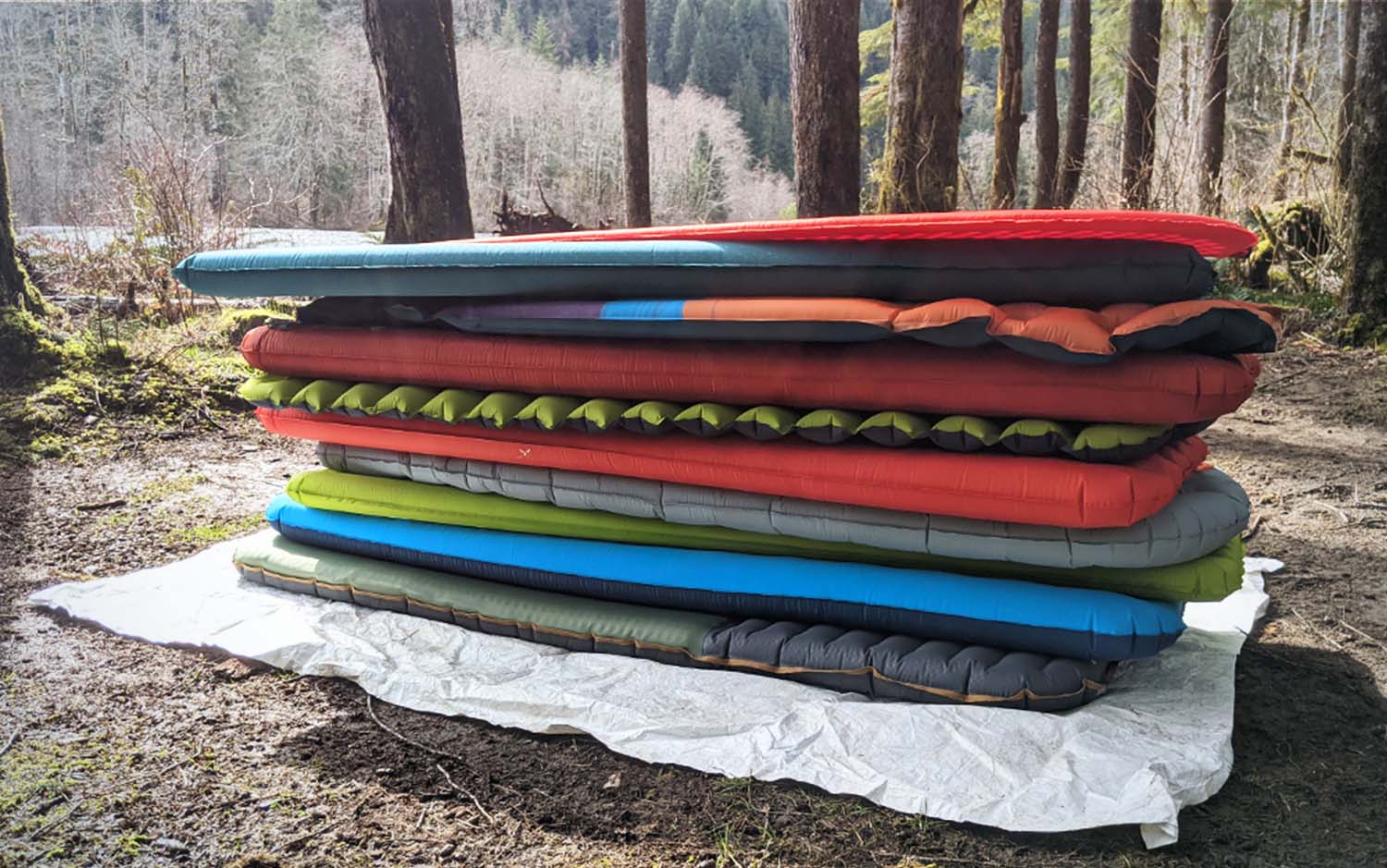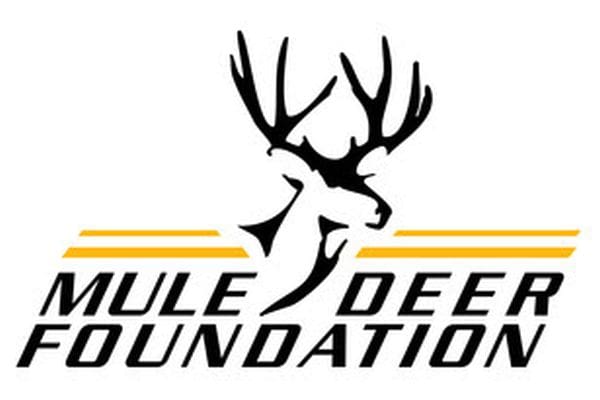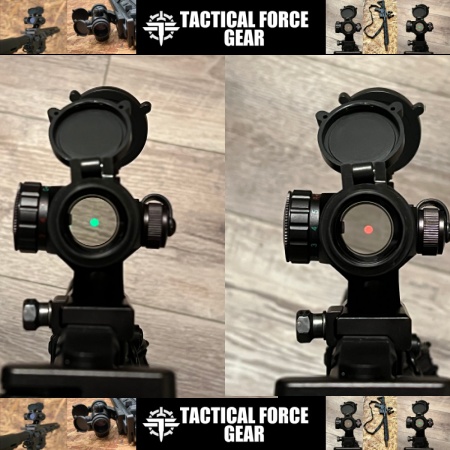We may earn revenue from the products available on this page and participate in affiliate programs. Learn More ›
It only takes one fitful night in the backcountry — shivering, hips bruised, cricked neck — to realize the importance of a great backpacking sleeping pad. But adding a quality pad also adds significant weight and cost to your kit, so it’s essential to get the right pad the first time. After testing dozens of different backpacking sleeping pads from seven different manufacturers, these are my top picks for the best backpacking sleeping pads for every adventure.
Best Overall: Therm-a-Rest NeoAir XLite NXT
↓ Jump to Review
Best Value: Big Agnes Rapide
↓ Jump to Review
Best for Cold Sleepers: Therm-a-Rest NeoAir XTherm NXT
↓ Jump to Review
Best for Extreme Conditions: Exped Dura 8R
↓ Jump to Review
Best Budget: Big Agnes Divide
↓ Jump to Review
Best for Bad Sleepers: Therm-a-Rest NeoLoft
↓ Jump to Review
Exped Dura 5R
↓ Jump to Review
Rab Ionosphere
↓ Jump to Review
REI Helix
↓ Jump to Review
Sea to Summit Ether Light XT
↓ Jump to Review
Nemo Tensor All-Season
↓ Jump to Review
Nemo Tensor Extreme Conditions
↓ Jump to Review
Alps Trailblazer
↓ Jump to Review
Nemo Quasar
↓ Jump to Review
Nemo Astro
↓ Jump to Review
Why You Need to Look at R Value First
Not price, not weight, not noise. The most important specification of your sleeping pad is its R value. R is a measure of insulation, which is important because the ground is really cold, and it will steal your body heat if given the chance. High R value pads are like cold-weather sleeping bags. Low R value pads are like summer-weight sleeping bags.
- High R Values: 6 to 10
- Medium R Values: 4 to 6
- Low R Values: 1 to 4
Current R value recommendations from manufacturers are geared toward hot sleepers. If you run cold, it’s critical that you get a higher R value pad. R values must be ASTM R values; manufacturer-estimated R values are useless.
Best Backpacking Sleeping Pads: Reviews & Recommendations
Best Overall: Therm-a-Rest NeoAir XLite NXT
Photo by Laura Lancaster
Buy from REI
Buy from Amazon
Buy from Garage Grown Gear
Pros
- Versatile R value
- Very lightweight
- Durable
Cons
- Nosier than other backpacking sleeping pads
- Confusing valve
- One of the worst pump sacks I used
- Expensive
Key Features
-
R Value:
4.5 -
Price Range:
$200 to $240 -
Available Sizes:
Short, regular, regular wide, large -
Seasonal Use for Cold Sleepers:
Summer, alpine, early shoulder season -
Seasonal Use for Hot Sleepers:
Three season
Report Card
-
Pad Weight:
13.1 ounces for a regular -
Durability Test:
Pass -
Time to Inflate Manually:
1:05 -
Time to Inflate with a Pump Sack:
2:15 -
Difficulty in Putting Away:
Easy
If there is one backpacking sleeping pad in your quiver, it should be the Therm-a-Rest NeoAir XLite NXT. With a 4.5 R value and 13.1 ounce tested weight for a regular pad, it has the best warmth-to-weight ratio out there. And after extensive testing — including common fail points on the seams, fabric, and valve — it’s not sacrificing any durability to get there. That’s the good news. But there have been, and continue to be, some gripes about the Therm-a-Rest XLite NXT that we need to address.
The first issue is noise, as this has long plagued this backpacking sleeping pad. The updated NXT solves a lot of this issue: If the old version of the Therm-a-Rest XLite sounded like opening a bag of potato chips, this newer version sounds like walking across fresh fall leaves. That’s to say, Therm-a-Rest has massively improved the noise issue, but it is still louder than other backpacking sleeping pads. If you are an extra sensitive sleeper, this is something to keep in mind. But you no longer need to worry about keeping up everyone in the campground.
I was surprised that Therm-a-Rest, which has engineered the best backpacking sleeping pad, hasn’t figured out how to engineer a better pump sack. It works OK, but it’s surprisingly inefficient compared to the likes of Exped and Nemo, and it’s a real pain to get on and off the valve. Speaking of the valve, expect some confusion the first handful of times you use it, as the Winglock design is unusual compared to other backpacking sleeping pads, and other valves for that matter. That being said, it proved extremely sturdy in my durability test, with zero issues with delamination or ripping.

Lastly, there’s the price. For its R value, this is a pricier sleeping pad. But I think that for its versatility, light weight, and durability, it’s well worth it.
Best Value: Big Agnes Rapide

Photo by Laura Lancaster
Buy from REI
Buy from Amazon
Pros
- Less expensive than comparable models
- Versatile R value
- Good pump sack
Cons
- Stuff sack is nearly unusable
- A little narrow
- Doesn’t come in a mummy shape
Key Features
-
R Value:
4.8 -
Price Range:
$150 to $300 -
Available Sizes:
Small, regular, long, wide, long wide, extra wide -
Seasonal Use for Cold Sleepers:
Summer, alpine, early shoulder season -
Seasonal Use for Hot Sleepers:
Three season
Report Card
-
Pad Weight:
18.9 ounces for a regular -
Durability Test:
Pass -
Time to Inflate Manually:
1:15 -
Time to Inflate with a Pump Sack:
1:25 -
Difficulty in Putting Away:
Hard
During testing, I was surprised at how well the Big Agnes Rapide performed. Despite costing 25 percent less than the Therm-a-Rest XLite NXT, it had a similar R value and was just as durable. And while the Rapide weighs five ounces more than the best backpacking sleeping pad, it still weighs less than other comparable models.
The Rapide came with one of the better pump sacks that I looked at, weighing less than the Tensor and Exped versions, while inflating my pad nearly as quickly. I also appreciated that its valve is straight forward and easy to use. The stuff sack, however, needs improvement. It is extremely difficult to get the Rapide back into its stuff sack, as it both requires you to fold into thirds or, better yet quarters, before rolling it, and even then it’s an impractically tight fit.
Finally, the Big Agnes Rapide does run a little narrow. It’s widest at the head and the foot of the sleeping pad, slightly narrowing inward until you get to the middle portion of the pad. Upgrade to the wide version if you have an issue with slipping off your pad.
Best for Cold Sleepers: Therm-a-Rest NeoAir XTherm NXT

Photo by Laura Lancaster
Buy from REI
Buy from Amazon
Buy from Garage Grown Gear
Pros
- Weighs less than a pound
- Very warm
- Surprisingly durable
Cons
- Expensive
- Confusing valve
- Bad pump sack
- A little noisy
Key Features
-
R Value:
7.3 -
Price Range:
$240 to $270 -
Available Sizes:
Regular, wide, large -
Seasonal Use for Cold Sleepers:
Three season -
Seasonal Use for Hot Sleepers:
All season
Report Card
-
Pad Weight:
15.8 ounces for a regular -
Durability Test:
Pass -
Time to Inflate Manually:
1:20 -
Time to Inflate with a Pump Sack:
2:15 -
Difficulty in Putting Away:
Easy
The most common complaint that people have with their backcountry sleep setup is that they’re cold. I’ve helped numerous people diagnose their setup and the problem is almost always their sleeping pad, not their sleeping bag. Current R value recommendations are geared toward people who run hot. If you run cold, you’re not going to be happy with an R value of 2 in the alpine. You really need an R value of 6, at a minimum, to be comfortable.
If this sounds like you, you want the Therm-a-Rest NeoAir XTherm NXT. With an R value of 7.3, it will keep even the coldest sleepers comfortable through three-season conditions. And, because it’s built using the same framework as my best overall pick, the XLite, it’s surprisingly light weight, lighter than almost every other pad that I tested. Of course, it also comes with all the same minor faults — confusing valve, inefficient pump sack, and the sound of fresh-fallen leaves whenever you roll over — but you’re going to be warm and comfortable, and that’s what really matters.
Best for Extreme Conditions: Exped Dura 8R

Photo by Laura Lancaster
Best for REI
Buy from Amazon
Pros
- Thickest fabric of any sleeping pad I looked at
- Filled with 700 fill power down
- Great pump sack
Cons
- Heavy
- Expensive
- Stuff sack is nearly usable
Key Features
-
R Value:
7.8 -
Price Range:
$250 to $275 -
Available Sizes:
Regular, wide, large -
Seasonal Use for Cold Sleepers:
All season -
Seasonal Use for Hot Sleepers:
All season
Report Card
-
Pad Weight:
33.1 ounces -
Durability Test:
Pass -
Time to Inflate Manually:
1:20 -
Time to Inflate with a Pump Sack:
1:10 -
Difficulty in Putting Away:
Hard
The Exped Dura 8R is not messing around. In addition to sailing through my durability test, at 175D, it had the thickest material on the bottom of the sleeping pad by several orders of magnitude. Even on the top of the sleeping pad, where you are less likely to have an errant rock puncture the pad, it has 70D fabric. No sleeping pad is truly invincible, but this one is certainly coming closest.
What’s really different here is that the Exped Dura 8R has literal goose down inside of it boosting its insulation. The 7.8 R value was the second highest of the twelve sleeping pads I looked at, and the inclusion of goose down — one of the world’s oldest and most powerful forms of insulation against the cold — further persuades me that this sleeping pad will protect you from even extreme cold.
The Exped Dura 8R is also very easy to use. The valves are straightforward. It’s easy to inflate using Exped’s best-in-class pump sack. It’s even easy to inflate manually, with one of the fastest times in my test. The stuff sack, unfortunately, is so small it’s nearly usable. But given how thick the fabric is here, you can probably just rubber band it together and you’ll be fine.
Of course, everything comes at a cost, and with the Exped Dura 8R it’s a double whammy of weight and price. This is both the heaviest and most expensive sleeping pad that I looked at.
Best Budget: Big Agnes Divide
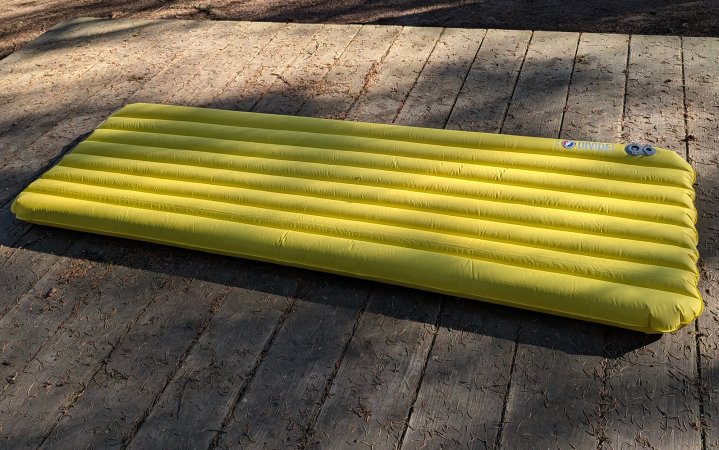
Photo by Laura Lancaster
Buy from REI
Buy from Amazon
Cons
- Pump sack is not very good
- Stuff sack is too small
- Not the lightest or the highest R value
Key Features
-
R Value:
4 -
Price Range:
$120 to $250 -
Available Sizes:
Small, regular, wide, wide long, extra wide long -
Seasonal Use for Cold Sleepers:
Summer -
Seasonal Use for Hot Sleepers:
Three season
Report Card
-
Pad Weight:
21.6 ounces -
Durability Test:
Pass -
Time to Inflate Manually:
1:45 -
Time to Inflate with a Pump Sack:
2:30 -
Difficulty in Putting Away:
Hard
Kitting yourself with backpacking gear can get pricey, so if you’re only objective in purchasing a backpacking sleeping pad is price, then go with the Big Agnes Divide. It’s got a reasonable R value for cold sleepers to use in the summer months, and hot sleepers could use this one safely into the shoulder seasons. It’s not as heavy as some of the other options I looked at. It’s from a reputable brand — Big Agnes — with a limited lifetime warranty.
Best for Bad Sleepers: Therm-a-Rest NeoLoft
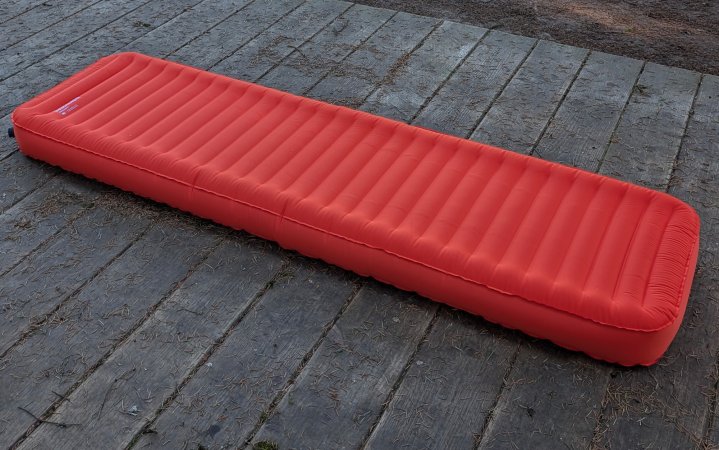
Photo by Laura Lancaster
Buy from REI
Buy from Amazon
Pros
- A little more comfortable
- Easy to use valves
- Versatile R value
- A better pump sack than the other Therm-a-Rest pads
Key Features
-
R Value:
4.7 -
Price Range:
$240 to $260 -
Available Sizes:
Regular, wide, large -
Seasonal Use for Cold Sleepers:
Summer, alpine, early shoulder season -
Seasonal Use for Hot Sleepers:
Three season
Report Card
-
Pad Weight:
25 ounces for a regular -
Durability Test:
Pass -
Time to Inflate Manually:
2:25 -
Time to Inflate with a Pump Sack:
1:35 -
Difficulty in Putting Away:
Fair
The Therm-a-Rest NeoLoft has garnered a lot of praise for how comfortable it is, so let’s start by popping the bubble a bit. It is a little more comfortable than traditional air-filled backpacking sleeping pads, but it’s still an air-filled backpacking sleeping pad. It’s not your tempurpedic mattress at home. Also, the marginal difference in comfort during the night is going to be offset by your discomfort during the day, when you’re carrying this thing. The NeoLoft weighs almost a pound more than the Therm-a-Rest NeoAir XLite.
If you’re not worried about carrying an extra pound, and you’re a poor sleeper who can really feel the microdifferences in comfort, then this pad is worth considering after you’ve tried a traditional air-filled sleeping pad. Just keep in mind that if the reason you are sleeping poorly is that you are cold, the R value of 4.7 may not be high enough for all conditions.
Exped Dura 5R

Photo by Laura Lancaster
Buy from REI
Buy from Cabela’s
Buy from Amazon
Pros
- Thickest fabric of any sleeping pad I looked at
- Great pump sack
- Affordable
Cons
- Heavy
- Stuff sack is nearly unusable
Key Features
-
R Value:
5R -
Price Range:
$160 to $250 -
Available Sizes:
Regular, wide, large, extra wide -
Seasonal Use for Cold Sleepers:
Summer, alpine, early shoulder season -
Seasonal Use for Hot Sleepers:
Three season
Report Card
-
Pad Weight:
30.2 ounces -
Durability Test:
Pass -
Time to Inflate Manually:
0:55 -
Time to Inflate with a Pump Sack:
1:05 -
Difficulty in Putting Away:
Hard
The Exped Dura 5R would certainly have ranked higher on my list of best backpacking sleeping pads if it weren’t so dang heavy. Like the Dura 8R, it has a wonderfully thick 175D fabric underneath to protect it from punctures. It’s got a great pump sack. It’s shockingly affordable. The stuff sack is way too small, but that’s a small ding in the scheme of things.
But for the purposes of backpacking, a three-season sleeping pad can’t weigh in at almost two pounds. That’s just too heavy. However, if you are packrafting or travelling with stock animals or even just looking for a compact sleeping pad for your car camping setup, this is a great option.
Rab Ionosphere

Photo by Laura Lancaster
Buy from Amazon
Pros
- Plenty durable
- Versatile R value
Key Features
-
R Value:
4.8 -
Price Range:
$220 -
Available Sizes:
Regular, long -
Seasonal Use for Cold Sleepers:
Summer, alpine, early shoulder season -
Seasonal Use for Hot Sleepers:
Three season
Report Card
-
Pad Weight:
19.5 ounces for a regular -
Durability Test:
Pass -
Time to Inflate Manually:
1:35 -
Time to Inflate with a Pump Sack:
1:35 -
Difficulty in Putting Away:
Fair
The Rab Ionosphere is a serviceable backpacking pad. It’s not too heavy; it’s got a reasonable R value. It’s plenty durable. Its stuff sack had a different design than I had been accustomed to, opening sideways with some elastic to hold it into place. But it works great. The only reason it’s not ranked higher up on my list is that for its R value and weight, it’s a little pricey. Save your money and go with either my overall or best value pick.
REI Helix

Photo by Laura Lancaster
See It
Pros
- Affordable
- Versatile R value
- Great pump sack
- Comes with velcro tags
Cons
- Was able to delaminate the valve during testing
- A little heavy
Key Features
-
R Value:
4.9 -
Price Range:
$169 -
Available Sizes:
Regular, wide, long wide -
Seasonal Use for Cold Sleepers:
Summer, alpine, early shoulder season -
Seasonal Use for Hot Sleepers:
Three season
Report Card
-
Pad Weight:
21.3 ounces -
Durability Test:
Failed the valve test -
Time to Inflate Manually:
1:25 -
Time to Inflate with a Pump Sack:
1:05 -
Difficulty in Putting Away:
Easy
There is a lot to appreciate about the REI Helix. It has a versatile R value that will serve most people in most backcountry scenarios. It has a great pump sack and was easy to inflate both with that, and manually. It was one of the few backpacking sleeping pads I tested to come with velcro straps, inviting you to ditch those impossible stuff sacks. It’s affordable, if a little heavy.

But in the final phase of my durability test, it ran into trouble. I was able to grab the sides of the intake valve and start to peel the lamination away. While I stopped before I compromised the integrity of the sleeping pad, the potential for delamination for a brand new pad does not inspire confidence for the long haul.
Sea to Summit Ether Light XT

Photo by Laura Lancaster
Buy from REI
Buy from Amazon
Pros
- Integrated stuff sack and pump sack
- Durable
- Lightweight
Cons
- Only appropriate for very hot weather or very hot sleepers
Key Features
-
R Value:
1.2 -
Price Range:
$180 to $190 -
Available Sizes:
Regular, large -
Seasonal Use for Cold Sleepers:
Not applicable -
Seasonal Use for Hot Sleepers:
Summer
Report Card
-
Pad Weight:
13.3 ounces -
Durability Test:
Pass -
Time to Inflate Manually:
1:10 -
Time to Inflate with a Pump Sack:
1:50 -
Difficulty in Putting Away:
Fair
If you run furnace-hot, or only plan to backpack at low elevation in the dog days of summer, then you can get away with a lower R value backpacking sleeping pad. One of the better options is the Sea to Summit Ether Light XT. It’s light and comfortable, and proved plenty durable during testing. I also liked the integrated stuff sack and pump sack, which worked reasonably well. This pad is both less expensive than my best overall pick and lighter weight than my best value pick.
Just remember that with an R of 1.2, you are only protected from the hardness of the ground, and will be very susceptible to cold seeping through the pad and your sleeping bag.
Nemo Tensor All-Season
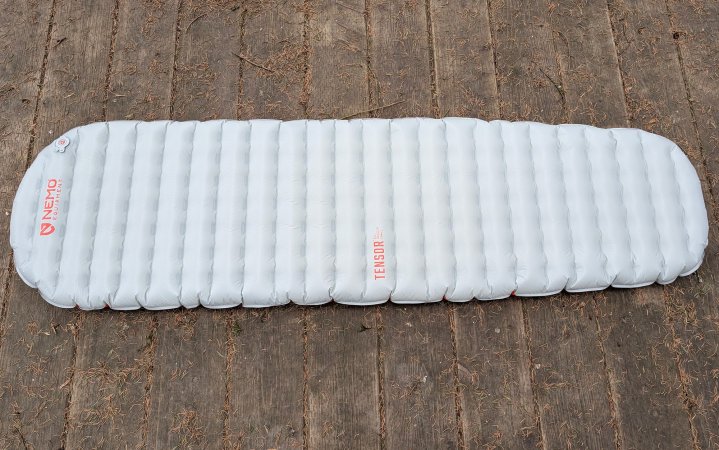
Photo by Laura Lancaster
Buy from REI
Buy from Amazon
Buy from Garage Grown Gear
Pros
- Versatile R value
- Lightweight
- Great pump sack
- Comes with velcro straps
Cons
- Significant failure potential with the valve
Key Features
-
R Value:
5.4 -
Price Range:
$200 -
Available Sizes:
Regular -
Seasonal Use for Cold Sleepers:
Three season -
Seasonal Use for Hot Sleepers:
All season
Report Card
-
Pad Weight:
14.6 ounces -
Durability Test:
Failed the valve test -
Time to Inflate Manually:
1:05 -
Time to Inflate with a Pump Sack:
1:25 -
Difficulty in Putting Away:
Easy
For most of my testing, I was convinced that the Nemo Tensor All-Season was going to come out on top. While it’s slightly heavier than my best overall pick, it had everything else going for it. Lower price point. Superior pump sack. Includes those handy velcro straps. Quieter.
But then I got to the valve portion of my durability test. With most other backpacking sleeping pads, I was unable to make any kind dent in the integrity of the seal, no matter how hard I tugged. But with the Nemo Tensor Extreme Conditions, I ripped open the pad completely with one hearty tug. Because the design and fabrication of the All-Season and the Extreme Conditions versions of the Nemo Tensor are virtually identical, I have not repeated this test on the All Season version just yet, as I’m planning to do a longer term rock test to get a better feel for the fabric integrity of each backpacking pad. See below for more information on the results of the durability test for the Nemo Tensor Extreme Conditions.
Nemo Tensor Extreme Conditions
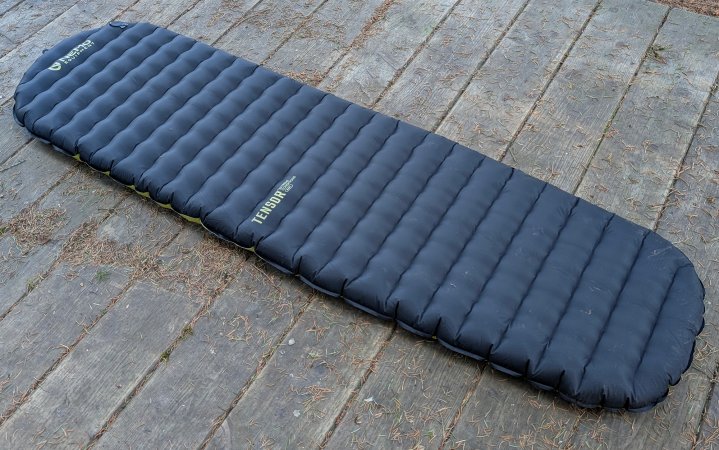
Photo by Laura Lancaster
Buy from REI
Buy from Amazon
Buy from Garage Grown Gear
Pros
- High R value is appropriate for winter conditions for even cold sleepers
- Surprisingly lightweight
- Great pump sack
- Comes with velcro straps
Cons
- Expensive
- Failed the final durability test
Key Features
-
R Value:
8.5 -
Price Range:
$250 -
Available Sizes:
Regular -
Seasonal Use for Cold Sleepers:
All season -
Seasonal Use for Hot Sleepers:
All season
Report Card
-
Pad Weight:
16.8 ounces for a regular -
Durability Test:
Failed the valve test -
Time to Inflate Manually:
1:05 -
Time to Inflate with a Pump Sack:
1:05 -
Difficulty in Putting Away:
Easy
Despite having a noticeably higher R value, the Nemo Tensor Extreme Conditions is a very similar backpacking sleeping pad to the Nemo Tensor All-Season. It’s the same shape, the fabric material, the same pump sack, stuff sack/velcro combo. And it’s the same valve.

The valve turned out to be the downfall during my durability test. When I gave the fully open valve a hearty tug, it ripped the fabric across the top in a way that you would not be able to repair. While I appreciate that backpackers should not pull on their valves as hard as they can, there are always going to be moments when things go wrong: something catches on your sleeve, you get frustrated in the moment. And for a pad that’s to be used in extreme conditions, there needs to be a chance of failure that is much closer to zero.
Alps Trailblazer

Photo by Laura Lancaster
Buy from Amazon
Cons
- Heavy
- Pump sack / stuff sack combo doesn’t work well
- Failed the valve test
- Unclear if the R value is based on the ASTM test
Key Features
-
R Value:
TBD -
Price Range:
$160 -
Available Sizes:
Regular -
Seasonal Use for Cold Sleepers:
TBD -
Seasonal Use for Hot Sleepers:
TBD
Report Card
-
Pad Weight:
25.5 ounces -
Durability Test:
Fail -
Time to Inflate Manually:
2:05 -
Time to Inflate with a Pump Sack:
2:10 -
Difficulty in Putting Away:
Hard
Before we get into this pad, a caveat: looking at the manufacturer specifications for this backpacking sleeping pad, it’s unclear if they are using ASTM standards for their R value. The reason this matters is that ASTM is the agreed-upon, third-party for R value, to help ensure consistency for these ratings across manufacturers. Prior to the introduction of the ASTM test, R values varied wildly, and were not a particularly useful tool for consumers. I’ll update this story once I hear back from Alps about their R value ratings.
One design detail that I did find frustrating was the valve. This is the only backpacking sleeping pad I looked at that only had an intake valve, with no dedicated outtake valve. So the only way to get air out of the pad, is to prop open the flap on the intake valve while you are pushing the air out. Let me tell you, this gets old fast, and it doesn’t work very well. It’s also nearly impossible to get all the air out.
But the worst part of the valve is that it had easily the weakest lamination of any backpacking sleeping pad I tested. It pulled up with surprisingly little effort, resulting in a hole at the edge. Any individual who is even remotely hard on their gear should steer clear of this backpacking sleeping pad.

Something I did appreciate about the Alps Trailblazer is that it is trying something new with the stuff sack. Like the Sea to Summit backpacking sleeping pads, this one has an integrated pump sack. They used this design change to make the stuff sack portion a roll top. Unfortunately, the stuff sack is so narrow that you would need to fold the Alps Trailblazer into thirds, ideally quarters, before rolling up to use it effectively. And because of the above valve issue, this is actually pretty tough to do.
Nemo Quasar

Photo by Laura Lancaster
Buy from REI
Buy from Amazon
Pros
- Great pump sack
- Comes with Velcro straps
- Affordable
Cons
- Lower R value
- Heavy
- Potential for valve failure
- No mummy option available
Key Features
-
R Value:
3.3 -
Price Range:
$160 to $200 -
Available Sizes:
Rectangular sizes only -
Seasonal Use for Cold Sleepers:
Summer -
Seasonal Use for Hot Sleepers:
Summer, alpine, early shoulder season
Report Card
-
Pad Weight:
25.5 ounces for a regular -
Durability Test:
Failed the valve test -
Time to Inflate Manually:
1:20 -
Time to Inflate with a Pump Sack:
1:25 -
Difficulty in Putting Away:
Easy
Unfortunately, the Nemo Quasar has the same valve as the Nemo Tensor series, and thus the same potential for failure. The Quasar is also fairly heavy by comparison, and it doesn’t have a particularly high R value — even hot sleepers should limit their use to the edges of the shoulder season. This is an affordable backpacking sleeping pad, though, and it has the excellent pump sack and velcro straps that their other pads come with.
Nemo Astro
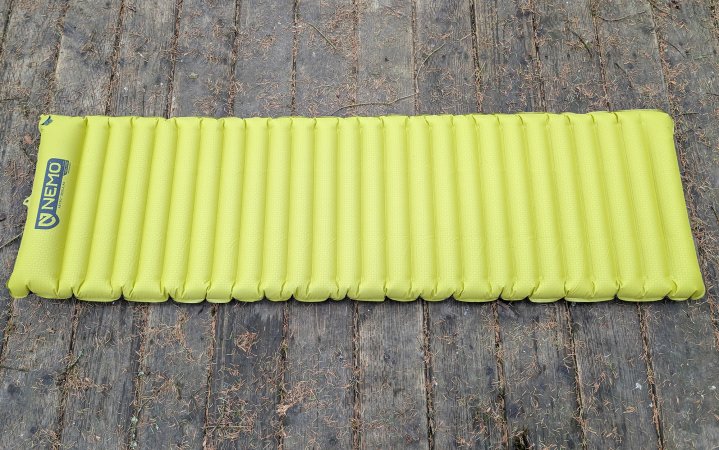
Photo by Laura Lancaster
Buy from Amazon
Pros
- Fast to inflate with a great pump sack
- Comes with velcro straps
- Affordable
Cons
- Low R value limits use
- Potential for failure with the valve
- Heavy
- No mummy version available
Key Features
-
R Value:
2.6 -
Price Range:
$150 -
Available Sizes:
Rectangular sizes only -
Seasonal Use for Cold Sleepers:
Not applicable -
Seasonal Use for Hot Sleepers:
Summer
Report Card
-
Pad Weight:
23.6 ounces -
Durability Test:
Failed the valve test -
Time to Inflate Manually:
0:50 -
Time to Inflate with a Pump Sack:
1:00 -
Difficulty in Putting Away:
Easy
The Nemo Astro has a low R value. Cold sleepers should steer clear. It’s also fairly heavy. This was, however, the easiest sleeping pad to inflate in my test, and it is one of the more affordable options out there.
Since the Nemo Astro has the same valve as the other Nemo backpacking sleeping pads, I repeated my valve test. Pulling only in the direction that is indicated to remove the intake valve, I was able to delaminate the valve from the fabric, creating a hole.
How I Tested and Evaluated the Best Backpacking Sleeping Pads
R Value
R Value measures the level of insulation being provided by a sleeping pad, and it is the most important measurement no matter who you are or what you are doing. Even the best cold weather sleeping bags only provide some insulation from the cold of the ground, so your sleeping pad is your best defense. Too little insulation and you run the risk of a terrible night’s sleep, or even hypothermia.
Read Next: What Is R Value? It’s Why Your Sleeping Bag Doesn’t Keep You Warm
| Backpacking Sleeping Pad | List Price | R Value | Seasonal Use for Hot Sleepers | Seasonal Use for Cold Sleepers |
|---|---|---|---|---|
| Nemo Tensor Extreme Conditions | $250 | 8.5 | All season | All season |
| Exped Dura 8R | $250 | 7.8 | All season | All season |
| Therm-a-Rest NeoAir XTherm NXT | $240 | 7.3 | All season | Three season |
| Nemo Tensor All-Season | $200 | 5.4 | All season | Three season |
| REI Helix | $170 | 4.9 | Three season | Summer, alpine, early shoulder season |
| Big Agnes Rapide | $150 | 4.8 | Three season | Summer, alpine, early shoulder season |
| Exped Dura 5R | $160 | 4.8 | Three season | Summer, alpine, early shoulder season |
| Rab Ionosphere | $220 | 4.8 | Three season | Summer, alpine, early shoulder season |
| Therm-a-Rest NeoLoft | $240 | 4.7 | Three season | Summer, alpine, early shoulder season |
| Therm-a-Rest NeoAir XLite NXT | $210 | 4.5 | Three season | Summer, alpine, early shoulder season |
| Big Agnes Divide | $120 | 4 | Three season | Summer |
| Nemo Quasar | $160 | 3.3 | Summer, alpine, early shoulder season | Summer |
| Nemo Astro | $140 | 2.6 | Summer | N/A |
| Sea to Summit Ether Light XT | $180 | 1.2 | Summer | N/A |
| Alps Trailblazer | $160 | TBD | TBD | TBD |
The most important test that is conducted on backpacking sleeping pads is for R value. Because R values are determined by third parties according to a mutually agreed upon industry standard, I do not run independent tests of these measurements. However, I have conducted several tests to find out what R value is appropriate for whatever season use by providing self-identified cold sleepers with higher R value pads at different times of the year. Based on this, I am providing much more conservative recommendations for the R value level than gear manufacturers and retailers.
Weight
Many serious backpackers are obsessed with weight, and for good reason: the less you’ve got on your back, the more fun you’re going to have. For each backpacking sleeping pad in this test, I independently measured the weight of the pad. I also separately weighed the pump sack and stuff sack, to help individuals decide if they are worth carrying or not.
*The pump sack for the Sea to Summit Ether Light XT is integrated with the stuff sack
Ease of Use
Blowing up a backpacking sleeping pad once is bad enough. But the longer the trip you’re on, the more it will start to wear on you. Fortunately, today’s backpacking sleeping pads come with pump sacks which massively cut down on the amount of time and effort it takes to blow these things up. I timed how long it took to inflate these both manually and with a pump sack. I then ranked the degree of difficulty in putting them away
Durability Test
It’s happened to every serious outdoorsperson at least once: in the middle of the night, you wake up to a partially deflated pad. By morning, you’re sleeping on the ground. To help minimize the chance that happens to you on your next overnighter, I put the backpacking sleeping pads through an extensive durability test designed to mimic common fail points. The first is the over-inflation test. Tiny weak spots in the seams can get bigger over time, resulting in leaks that are impossible to fix. To stress test the seams and welding in the backpacking sleeping pads, I inflated each backpacking sleeping pad to capacity with an electric air pump, and then continued to inflate it for another minute. I then left the pads out for an hour with weights on top to see if any holes had developed. Finally, I recreated the experience of inadvertently popping your pad by sleeping on a pointy rock overnight. For this test, I blew up each sleeping pad and placed a rock underneath it. I then loaded 10 pounds directly on top of where the rock was beneath the pad and left it for an hour. Finally I stress tested the valves on each backpacking sleeping pad by torquing and tugging on each with moderate hand strength. Each test was evaluated as pass/fail, with relevant details in the above production descriptions.
A Quick Note on Comfort
I’ve slept on backpacking sleeping pads that use vertical baffles, honeycomb baffles, horizontal baffles. I’ve used backpacking sleeping pads that are three inches thick and four inches thick. In truth, I can barely tell the difference between most models, even using a quilt. Some individuals may have particular preferences for one design over the other, but if you’re purchasing your first backpacking sleeping pad, you can trust that all the picks on this list will be reasonably comfortable, especially if you are tired after a long day in the backcountry. In this review I’ve made a point to highlight a few pads that are exceptionally comfortable, like the Therm-a-Rest NeoLoft and the Exped Dura 8R. Do not be fooled by the self-inflating backpacking sleeping pads that contain foam. These are not thick enough to protect your hips from the ground, and the weight to R value ratio is invariably worse. As such, I have not included them in this review.
Why I’m Not Recommending Self-Inflating Backpacking Sleeping Pads
A style of backpacking sleeping pad that continues to be popular despite better options on the market are self-inflating pads. These pads incorporate foam into their design and structure their baffles in such a way that you can, theoretically, open up the valve and they’ll inflate on their own. The argument in favor of these sleeping pads is that, in the event that your pad develops a hole, the foam means you’ll have at least some protection underneath you. People also like the idea of self-inflating, especially in contrast to laboriously blowing up a sleeping pad themselves. Finally, adding foam to a backpacking sleeping pad seems like it would make it more comfortable.
Unlike the best air mattresses for camping, self-inflating backpacking sleeping pads are not more comfortable than air-only pads. This is because they don’t provide enough height off the ground, typically two inches or less of height. In my experience, you can feel the hardness of the ground through the foam as soon as you lay on it.
Most people find that, in the field, self-inflating sleeping pads don’t inflate as quickly as they expect, or at all. This is because most people store their sleeping pads packed away, which inhibits the foam’s ability to take on air quickly. Typically, people will report that it will inflate a bit, maybe halfway, over the course of an hour or two, and then they have to finish inflating it the rest of the way manually. Where the self-inflating part usually comes into play is when you pack it away again, as these pads resist having the air squeezed out of them. That’s why their stuff sacks have compression straps on them, unlike typical backpacking sleeping pads.
If you’re still tempted to purchase a self-inflating sleeping pad, I would recommend opting for pairing a low-cost closed-cell foam pad with a typical air-only backpacking sleeping pad, instead. As you get more comfortable with your setup, you’ll likely eventually discard one in favor of the other.
How to Choose a Backpacking Sleeping Pad
Your Sleep System
Your backpacking sleeping pad is the foundation of your sleep system, so it’s important to consider how it integrates with either the best sleeping bag or the best backpacking quilt. Keep in mind that the temperature ratings of sleeping bags assume you are using a sleeping pad with a minimum R rating of 4.8.
Noise
While most inflatable backpacking sleeping pads aren’t exactly silent, they are quiet enough. In my experience, the backpacking sleeping pads with exceptionally high warmth and a low weight typically have a bit of a crinkle to them, due to the metallic film in the insulation. While the Therm-a-Rest NeoAir series used to have a reputation for being exceptionally loud, they were able to resolve this issue in their release of the NXT update.
Thickness
Too-thin backpacking sleeping pads can become uncomfortable over the course of the night, especially for individuals who are sensitive to feeling the hardness of the ground against their backs or hips. In my experience, thickness is more important than the inclusion of foam in an inflatable sleeping pad (a major reason why I don’t recommend so-called self inflating mattresses for backpacking).

Comfort
This is a subjective measurement, more so as there isn’t any backpacking sleeping pad which is truly comfortable — don’t expect to be as comfortable as you are at home. Far and away the most important factor impacting your comfort is if it’s thick enough to protect you from the hardness of the ground. Next up is the inclusion of foam (although this typically comes with a major weight penalty). Finally, there is the baffle design. In my personal experience, the waffle design of backpacking sleeping pads like the Sea to Summit Ether Light XT Insulated Air Sleeping Mat are the most comfortable, but others prefer the horizontal baffle style of the Therm-a-Rest NeoAir or the the more unusual design of the Klymit Static V2. The only way to determine what your preference is is to try a few different types out camping.
Things to Consider Before Buying the Best Backpacking Sleeping Pad
Inflatable vs. Closed-Cell Foam
The choice between an inflatable sleeping pad versus closed-cell foam is one of performance versus reliability. Inflatable pads are warmer, lighter, fit easily into your pack, and are almost always more comfortable. However, closed-cell foam pads never unexpectedly deflate overnight, don’t take up room inside your pack, and double as a butt pad for breaks. (Learn more from our guide to inflatable vs. cell-foam sleeping pads.)

Material
The exterior of inflatable backpacking sleeping pads is usually constructed from either polyester or nylon at varying thicknesses, which is measured in denier (D). Most backpacking sleeping pads are between 20D, the thinnest material, typically used for ultralight pads, to 75D in thickness, which approaches the thickness typically seen on car camping pads. Nylon is generally a stronger material than polyester, but laminates (which can make a pad more airtight) apply better to polyester than to nylon.
Closed-cell foam pads are obviously made of closed-cell foam which is an insulating and water resistant material that can keep hikers happy on warm nights and supplement an inflatable pad in the cold. The best backpacking sleeping pads made of closed-cell foam sometimes include a metallic lining for an increased R rating.
Weight
Most of the best backpacking sleeping pads weigh between 1 and 2 pounds, with the heavier end of the spectrum providing greater comfort and the lighter end of the spectrum typically running quite narrow. It’s hard to put a value on a great night of sleep when you’re facing ten plus miles of hiking in the morning, so we recommend erring on the side of caution. One way to save weight, for some backpackers, is to choose a short sleeping pad, and then tuck your backpack under your feet at night. This way, your hips and shoulders get the benefit for a fraction of the ounces.
Size
There are two sizes that you should be concerned with — the size of the pad packed into your backpack or strapped to the outside, and the size of the pad when it’s inflated. Most pads today come in sizes ranging from short to tall, regular to wide; however, in our experience even the “wide” size — typically 25 inches — is not all that wide. Two exceptions to this are the Klymit, which has a wide size of 29 inches, and the Big Agnes Q Core Deluxe, which goes out to 30 inches. Couples looking to share a pad can look for a double-wide pad or one of the best camping mattresses for couples.

Shape
Most sleeping pads are one of two shapes: rectangular or mummy. The idea behind the mummy-shaped pads is simple — your body isn’t rectangular, so why should your pad be? This design also shaves off a few ounces. But plenty of backpackers, especially side sleepers, find that the mummy-shaped pads are easier to roll off of, and prefer a rectangular pad for that reason.

R Rating
As anyone who has been backpacking during a shoulder season knows, the cold from the ground will suck out your body heat faster than cold air, leaving you shivering inside of your 20-degree bag. The R value measures how well the pad insulates (or “resists,” hence the R) the cold, with 1 being the lowest rating (suitable for lowland backpacking at the height of summer) all the way up to 10 (typically only needed in extreme conditions). Sleeping pad manufacturers once conducted their own testing (or in some cases simply guessed), but as of 2020 R ratings are standardized by the American Society for Testing and Materials (ASTM).
FAQs
A quality backpacking sleeping pad typically runs $100 to $200, with those suitable for winter camping upwards of $250. Closed cell-foam sleeping pads are closer to $50 with the budget pick only costing $35.
If you’re young and only planning to summer backpack for a night or two in a forest with a cushioned, pine-needle floor (I’m looking at you, Oregon), then maybe — maybe — you can get away without a sleeping pad. But we wouldn’t recommend it. For shoulder season or winter travel, or any travel at altitude, the warmth provided by a backpacking sleeping pad is essential, not only to your comfort, but also to your safety.
Like with sleeping bags, the question of what R value you’ll need for your camping sleeping pad depends on your natural core temperature. For summer adventures through the foothills, you can disregard this number, as almost any R value will do. For shoulder season backpacking, or if you plan to spend significant time in the alpine, an R value of 3 to 5 is best. Anyone planning on a backpacking trip where subzero temperatures are a possibility needs to have a pad rated to at least 6. Adjust as needed if you sleep cold or run hot. Backpackers who use quilts, as opposed to traditional sleeping bags, should choose a pad with an R value that is slightly higher than they think they need.
No, self inflating sleeping pads are not a good choice for backpacking. There are three main reasons to avoid them. First, the hassle and muscle power required to force the pad back into its stuff sack the next morning outweighs the convenience. Next, these pads are typically much thinner for the same weight, which means you are more likely to feel the hard ground underneath your back or hips. Finally, the pump sacks provided by (or even integrated into) a number of the above picks completely eliminates the light-headedness that you might remember from blowing up sleeping pads in the past. Only a few light breaths (less than you would use to blow out a candle) are needed to inflate these sacks.
Look for sleeping pads that are a minimum of 2.5 inches thick to ensure that you’re protected from the hardness of the ground. After that, it’s not especially important how thick a sleeping pad is, although some individuals report that they struggle with slipping off of those that are 4 inches or higher.
Yes, stacking sleeping pads (usually done with a closed-cell foam and an inflatable air mattress) results in an increased R value. While a good rule of thumb is that you can add two R values together, it’s worth keeping in mind that this has not been assessed by ASTM.
Backpacking sleeping pads can last for years, or even decades, depending on how you care for them — most top manufacturers offer limited lifetime warranties as a result. The most important step is to always take care to ensure that there are no sharp objects on the ground below your backpacking sleeping pad when setting up for the night. (Although if you do end up with a hole in the pad, they are easy enough to repair it, as long as it isn’t along one of the seams.) At home, give your backpacking sleeping pad some time to air dry after each trip before storing it away for the season to help reduce the potential of mold accumulation.
You do not need to clean or wash your backpacking sleeping pad, but you may want to if it gets excessively dirty, greasy, or sandy. The first step is to close the valve — you do not want water sneaking into your backpacking sleeping pad as that can harm the interior insulation and/or collect mold. Next, grab some warm water and hand wash the exterior of the sleeping pad in a bathtub or similar. Your last step is dry off the sleeping pad — I like to hang it over a shower rod or off the back of a chair.
Final Thoughts on the Best Backpacking Sleeping Pads
Though not considered one of the “Big 3,” choosing the best backpacking sleeping pad for your sleep style and the temperatures you plan to trek out into is essential for avoiding the dreaded Type III fun. I sometimes skimped on pads when I was younger. But with more experience, I learned that a good sleeping pad makes it a lot easier to get a good night’s sleep, and that in turn makes the next day’s adventure all the more fun. I recommend thinking about your sleeping pad, sleeping bag or quilt, and, ideally, a pillow, as a complete system and budget your funds and ounces accordingly.
Read the full article here

